8.4 /10 1 Votes8.4
4/5 Complete ROMS Director(s) Kenji Kikuchi | 7.6/10 FreeROMS 4.8/5 eBay Initial release date 17 December 1999 Mode Single-player video game | |||||||||||||||||||||||||||||||||
 | ||||||||||||||||||||||||||||||||||
Producer(s) Shinji HatanoShinichi Nakamoto Composer(s) Hironao YamamotoShohei BandoKazuhiko Sawaguchi Similar Mario Party games, Party games, Other games | ||||||||||||||||||||||||||||||||||
Mario party 2 classic nintendo video game gameplay fun old man lego floyd hobbykids hobbygamestv
Mario Party 2 (Japanese: マリオパーティ2, Hepburn: Mario Pāti Tsū) is a board game-style party video game developed by Hudson Soft and published by Nintendo for the Nintendo 64 video game console. The game was first released in Japan on December 17, 1999 and in other regions in 2000. The game is the direct sequel to Mario Party and is the second game in the Mario Party series, followed by Mario Party 3.
Contents
- Mario party 2 classic nintendo video game gameplay fun old man lego floyd hobbykids hobbygamestv
- How to destroy friendships mario party 2 mario party saturday
- Gameplay
- Reception
- References
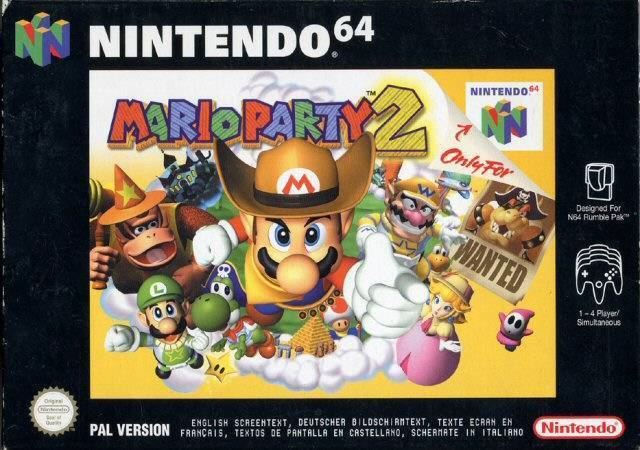
Mario Party 2 features six playable characters: Mario, Luigi, Princess Peach, Yoshi, Wario and Donkey Kong from the Mario series, who can be directed as characters on various themed game boards. The objective is to earn the most stars of all players on the board; stars are obtained by purchase from a single predefined space on the game board. Each character's movement is determined by a roll of a die, with a roll from each player forming a single turn. Each turn in Mario Party 2 is followed by a minigame, which is competed to earn money (10 gold coins, in most cases) for the character, used to buy items and stars. The game was also released on the Wii Virtual Console title in 2010, and for the Wii U Virtual Console in 2016.
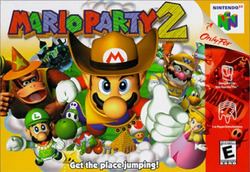
How to destroy friendships mario party 2 mario party saturday
Gameplay
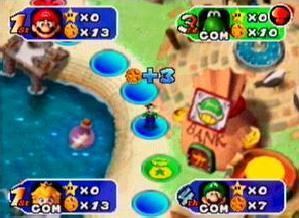
There are 65 mini-games in Mario Party 2. They are divided into four-player, one vs. three, two vs. two, and battle games. There are also six item and duel mini-games as well as a special one that can be unlocked. The type of mini game is determined by the color of the spaces players land on. If all four players have the same color panel, whether it's red or blue, a four player mini game begins. If two players have a blue panel, and the other two have a red panel, then it's a two versus two mini game. If one player has a blue panel, and the others have a red panel, or vice versa, then a one versus three mini game begins. If a player lands on a battle space, a battle mini game begins.
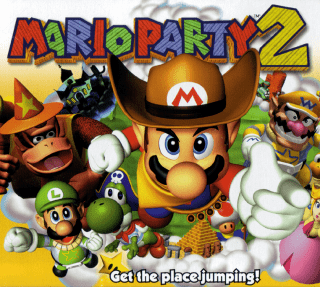
The mini games have varied objectives. For example, the objective of "Mecha Marathon" is to get your wind up toy the furthest distance by repeatedly tapping A+B at the same time. Some mini games (such as "Face Lift" using the main characters instead of Bowser) have been edited and transferred and/or also retitled from the first Mario Party. Although many are identical, some have different objectives and/or change appearance in some way. An example is slot car derby, which has a new background. Mini-games that involve rotating the control stick, which were in the original Mario Party, are not present in this installment due to potential injuries, such as blisters, from rotating the stick too quickly; this was the subject of a lawsuit in the case of the first game.
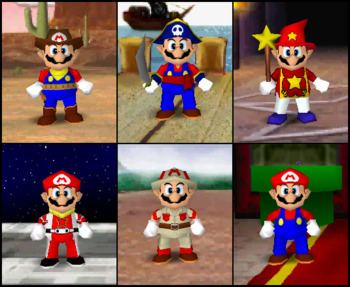
A character comes across several opportunities to either buy, win, or steal items. Such items include mushrooms, skeleton keys, treasure chests, and others. For example, the red mushroom allows a player to hit the dice block twice and move the sum of the numbers in spaces. If a player rolls the same number twice, he or she gets a bonus of 10 coins. Accordingly, rolling three of the same number with the golden mushroom results in a 30 coin increase. However, rolling "7" three times results in a 50 coin increase.

All of the playable characters from the original game are still available, but this time, they are all dressed in costumes unique to the board players are playing on (except for Bowser Land, on which they wear their usual attire). Board characters include Toad, Baby Bowser, and Boo, with the notable absence of Bowser and Koopa Troopa (although both have roles in the game). Another new feature of the game is the introduction of buildings on the boards: the Item Shop and the Koopa Bank, as well as power ups such as the "Red" and "Gold" mushrooms which allows players to roll up to two or three dice at once. All the board titles end with "land", (ex. "Bowser Land", "Space Land", etc.) and unlike in the original, the winner is announced during a cut scene in which the winner thwarts Bowser who harasses Koopa during certain scenarios appropriate to the board's theme. Baby Bowser also appears and accompanies the space where the location of the previous star was and takes five coins from the player who passes by, although every once in a while, he'll sometimes reward the player five coins instead. Boo can still take coins and stars from other players like he did in the first game but unlike in the first game where stealing coins was free, it now costs five coins but unlike in the first game he can steal twice as many coins where in the original he could only steal anywhere from 1-20 coins, stealing stars still costs 50 coins like it did in the first game. In the first game, all eight game boards featured Koopa giving the players 10 coins every time they overlapped the board (20 coins within the last five turns) however this feature was omitted in this game, with the exception where it still occurs on the Mini-Game Stadium board.
Mario Party 2 also features several new spaces, with the "1-Player Mini Game" and "Mushroom" spaces from the first game absent; the Battle, Item, and Bank spaces are introduced. The Item space activates mini-games specific to the board that allows someone a chance to collect an item, which is now used to further players' board strategy (as opposed to items being used to toggle universal settings in the first game where certain items appeared randomly during the board gameplay mode). The Battle space triggers the newly introduced Battle mini-games, which puts players against each other for a giant pot of coins with a 70/30 percent ratio share for the 1st and 2nd-place winners. The Bank space gives players who land on it all deposits made in the Koopa Bank by others, who must deposit a minimum of five coins (1-4 coins if they have less than five coins) if they pass the space. One exception however occurs on Bowser's board, where the rules are reversed: players passing the bank get five coins while the player landing on the "Bank" space must pay back the total balance. If no coins are present, a star is taken from that player. (nothing happens if the player has nothing, however and the balance is reset).
The game also features six brand new boards and modes (including Mini-Game Coaster, akin to the original Mario Party's Mini-Game Island where the player must beat several mini-games across three, six, or even nine worlds depending on which difficulty is chosen) The return of Mini-Game Stadium. Forty-three new mini-games were introduced in Mario Party 2, while old Mario Party mini-games were updated and some were retitled. Three new types of mini-games are also introduced: Battle mini-games, Item mini-games, and Duel mini-games. Also unlike in the first game, players no longer lose coins if they lose in a mini-game. Once all of the chosen amount of rounds on the selected board are used up (Which always consists of 20, 35, or 50 turns like in the original) the total number of coins and stars both the human and computer players collected during the board and mini-games are rewarded and added to the coin bank. Unlike in the original where only the human player(s)' coins and stars were added. Also unlike in the original, each star collected both by the human and computer players is worth an additional 50 coins, where in the original the player had to collect 100 stars to unlock the final board "Eternal Star". This is because the final board in this game, Bowser Land only requires the player to play all other boards to unlock.
Reception
Mario Party 2 received "favorable" reviews according to the review aggregation website GameRankings. It was praised for its additions to the original game's foundation and generally considered a moderate improvement. This praise, however, was somewhat offset by the fact that the formula had not drastically changed from the first game - in particular, the continued emphasis on blind luck over skill and lack of enjoyment playing alone.
GameSpot said the game has much more replay value than the previous game, and that the mini-games are much less annoying. IGN said that while the game had more content, and it "sticks with the same winning formula...there really isn't enough new here to warrant another purchase".
